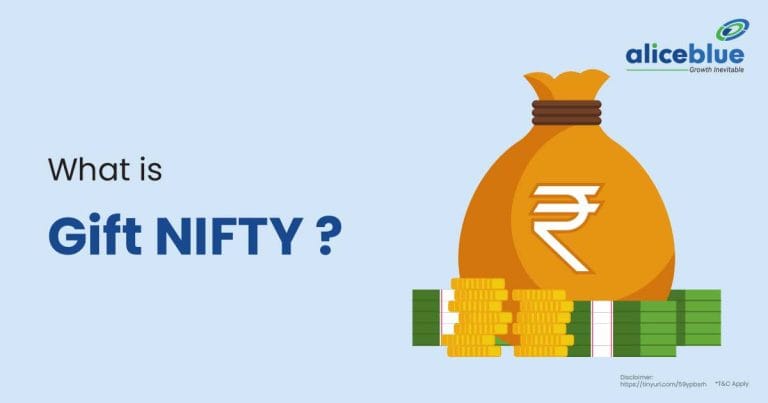Indian Bank Ltd’s fundamental analysis highlights key financial metrics, including a market capitalization of ₹74,749.77 crore, a PE ratio of 8.53, a debt-to-equity ratio of 11.8 and a return on equity (ROE) of 15.4%. These figures reflect the bank’s financial strength and solid market position.
Content:
Indian Bank Overview
Indian Bank Ltd is a leading public sector bank in India, offering a comprehensive range of banking and financial services to individuals, businesses, and corporates. The bank is known for its wide branch network and strong customer base across India.
The company has a market capitalization of ₹74,749.77 crore and is listed on both the Bombay Stock Exchange (BSE) and National Stock Exchange (NSE). Currently, the stock is trading close to its 52-week high of ₹633, significantly above its 52-week low of ₹374, indicating strong investor confidence. The all-time high of the stock is ₹633, while the all-time low is ₹41.6.

Indian Bank Financial Results
The company demonstrated strong financial growth from FY 22 to FY 24, with total income increasing from ₹46,268 crore to ₹64,232 crore and net profit rising from ₹4,144 crore to ₹8,423 crore. The company maintained a stable PPOP margin and improved EPS over the years.
- Revenue Trend: Total income increased from ₹46,268 crore in FY 22 to ₹52,790 crore in FY 23, and further to ₹64,232 crore in FY 24, indicating robust revenue growth during this period.
- Equity and Liabilities: As of March 2024, Indian Bank’s equity capital increased to ₹1,347 crore. Reserves grew from ₹43,706 crore in March 2022 to ₹58,901 crore in March 2024. Borrowings rose significantly to ₹7,11,096 crore, while other liabilities increased to ₹24,365 crore.
- Profitability: The Pre-Provision Operating Profit (PPOP) margin slightly decreased from 29.07% in FY 23 to 26.37% in FY 24, after being at 27.63% in FY 22, indicating relatively stable operational efficiency with minor fluctuations.
- Earnings per Share (EPS): Earnings per Share (EPS) increased from ₹33.99 in FY 22 to ₹66.03 in FY 24, showing significant growth in profit per share, reflecting improved profitability for shareholders.
- Return on Net Worth (RoNW): Return on Net Worth (RoNW) improved from 10.52% in FY 22 to 15.38% in FY 24, indicating stronger returns on shareholders’ equity and enhanced profitability over time.
- Financial Position: The company’s financial position strengthened with net profit increasing from ₹4,144 crore in FY 22 to ₹8,423 crore in FY 24, showcasing significant improvement in financial health and management.
Indian Bank Financial Analysis
| FY 24 | FY 23 | FY 22 | |
| Total Income | 64,232 | 52,790 | 46,268 |
| Total Expenses | 47,294 | 37,442 | 33,483 |
| Pre-Provisioning Operating Profit | 16,938 | 15,348 | 12,785 |
| PPOP Margin (%) | 26.37 | 29.07 | 27.63 |
| Provisions and Contingencies | 8,809 | 10,017 | 8,791 |
| Profit Before Tax | 8,129 | 5,330 | 3,994 |
| Tax % | — | — | — |
| Net Profit | 8,423 | 5,574 | 4,144 |
| EPS | 66.03 | 44.74 | 33.99 |
| Net Interest Income | 23,309 | 20,268 | 16,732 |
All values in ₹ Crores.
Indian Bank Company Metrics
Indian Bank Ltd has a market capitalization of ₹74,749.77 crore, with Profit Before Tax growing from ₹3,994 crore in FY22 to ₹8,129 crore in FY24. An EPS of ₹69.1 and a 2.18% dividend yield reflect strong shareholder returns despite significant debt of ₹7,11,096 crore.
- Market Capitalization: Indian Bank Ltd has a market capitalization of ₹74,749.77 crore, representing the total market value of its outstanding shares, underscoring its significant presence in the Indian banking sector.
- Profit Before Tax (PBT): Indian Bank’s Profit Before Tax (PBT) showed steady growth, increasing from ₹3,994 crore in FY 22 to ₹5,330 crore in FY 23, and further to ₹8,129 crore in FY 24, reflecting improving profitability over these years.
- Earnings per Share (EPS): Indian Bank has an EPS of ₹69.1, indicating the amount of profit attributed to each outstanding share of common stock, reflecting the bank’s profitability for its shareholders.
- Face Value: The face value of Indian Bank’s shares is ₹10.00, which is the nominal value of each share as stated on the share certificate. This value is used in calculating dividends and determining the nominal value of shares.
- Asset Turnover: Indian Bank has an asset turnover ratio of 0.07, reflecting the bank’s efficiency in utilizing its assets to generate revenue, which is relatively low, indicating room for improvement.
- Total Debt: Indian Bank carries a significant debt of ₹7,11,096 crore, reflecting its financial leverage. Effective management of this debt is crucial for the bank’s long-term financial stability and growth.
- Dividend Yield: Indian Bank has a dividend yield of 2.18%, reflecting the annual dividend income relative to its current share price, making it an attractive option for income-focused investors.
- Book Value: Indian Bank has a book value of ₹447 per share, representing the net asset value of the bank divided by the number of outstanding shares. This value provides insight into the bank’s financial health and intrinsic worth.
Indian Bank Stock Performance
Indian Bank delivered impressive returns on investment with 36.1% over 1 year, 66.2% over 3 years, and 27.4% over 5 years, showcasing strong long-term performance and profitability for investors.
| Period | Return on Investment (%) |
| 1 Year | 36.1 |
| 3 Years | 66.2 |
| 5 Years | 27.4 |
Example: If an investor had invested ₹1,000 in Indian Bank’s stock:
1 year ago, their investment would be worth ₹1,361.
3 years ago, their investment would have grown to ₹1,662.
5 years ago, their investment would have increased to approximately ₹1,274.
This highlights Indian Bank’s solid long-term performance and consistent returns for investors.
Indian Bank Peer Comparison
Indian Bank, with a market cap of ₹74,722.81 crore, has a P/E ratio of 8.21 and an ROE of 15.35%. It delivered a 1-year return of 36.07%, competing closely with peers like Canara Bank and Bank of Baroda, while offering a 2.18% dividend yield.
| S.No. | Name | CMP Rs. | Mar Cap Rs.Cr. | P/E | ROE % | EPS 12M Rs. | 1Yr return % | ROCE % | Div Yld % |
| 1 | St Bk of India | 812.6 | 725213.93 | 9.94 | 17.34 | 76.05 | 44.29 | 6.16 | 1.67 |
| 2 | Bank of Baroda | 252.25 | 130447.66 | 6.88 | 16.69 | 36.82 | 33.69 | 6.33 | 3.02 |
| 3 | Punjab Natl.Bank | 115.65 | 127342.33 | 10.91 | 8.54 | 10.66 | 87.91 | 5.46 | 1.28 |
| 4 | I O B | 62.06 | 117308.4 | 42.1 | 9.98 | 1.47 | 102.02 | 5.41 | 0 |
| 5 | Canara Bank | 110.95 | 100638.88 | 6.46 | 17.94 | 17.21 | 70.72 | 6.63 | 2.9 |
| 6 | Union Bank (I) | 124.3 | 94885.68 | 6.69 | 15.64 | 18.84 | 39.51 | 6.55 | 2.87 |
| 7 | Indian Bank | 554.75 | 74722.81 | 8.21 | 15.35 | 69.11 | 36.07 | 5.92 | 2.18 |
Indian Bank Shareholding Pattern
In FY 2024, the Indian Bank’s shareholding pattern shows promoters holding 73.84%, down from 79.86% in FY 2023. FII holdings increased to 5.29%, DIIs rose to 16.95%, while retail and others decreased to 3.93%, reflecting shifting investor dynamics.
| FY 2024 | FY 2023 | FY 2022 | |
| Promoters | 73.84 | 79.86 | 79.86 |
| FII | 5.29 | 4.17 | 1.72 |
| DII | 16.95 | 11.55 | 11.13 |
| Retail & others | 3.93 | 4.43 | 7.31 |
All values in %
Indian Bank History
Indian Bank, established in 1907, is one of India’s oldest and most trusted public sector banks. Founded in Chennai by S. Rm. M. Ramaswami Chettiar, the bank has grown significantly, serving millions of customers across India and abroad with a wide range of banking services.
Throughout its history, the Indian Bank has played a crucial role in supporting India’s economic development, particularly in the agricultural and small business sectors. The bank’s focus on financial inclusion has helped it build a strong customer base, especially in rural and semi-urban areas.
In 2019, Indian Bank merged with Allahabad Bank, further strengthening its position in the Indian banking sector. This merger expanded the bank’s reach and customer base, making it one of the largest public sector banks in the country with a wide network of branches.
Today, Indian Bank continues to evolve, embracing digital banking and innovative financial solutions to meet the changing needs of its customers. The bank’s commitment to service excellence and financial stability has solidified its reputation as a reliable partner for individuals and businesses alike.
How To Invest In Indian Bank Shares?
Investing in Indian Bank shares is a straightforward process:
- Open a Demat Account: Start by opening a Demat and trading account with a reliable brokerage firm like Alice Blue.
- Complete KYC: Submit necessary documents for KYC verification.
- Fund Your Account: Deposit funds into your trading account.
- Buy Shares: Search for Indian Bank shares and place your buy order.

Indian Bank Fundamental Analysis – FAQs
Indian Bank has a market cap of ₹74,749.77 crore, an EPS of ₹69.1, a PE ratio of 8.21, and significant debt of ₹7,11,096 crore. The bank shows solid profitability with a 2.18% dividend yield.
Indian Bank has a market capitalization of ₹74,749.77 crore, representing the total market value of its outstanding shares, reflecting its strong presence in the Indian banking sector.
Indian Bank is a public sector bank established in 1907, offering a wide range of banking and financial services across India, with a strong focus on retail, corporate, and international banking.
Indian Bank is a government-owned public sector bank, with the Indian government holding the majority stake through the Ministry of Finance.
As of FY 2024, the main shareholders of Indian Bank include promoters at 73.84%, FIIs holding 5.29%, DIIs at 16.95%, and retail & others holding 3.93%.
Indian Bank operates in the banking and financial services industry, providing comprehensive services including retail, corporate, and international banking, along with financial advisory services.
Investors can buy Indian Bank shares through stock exchanges by opening a trading account with a broker or via online trading platforms, participating in market transactions during trading hours.
Determining if the Indian Bank is overvalued or undervalued requires analyzing its current market price compared to its intrinsic value, considering factors like PE ratio, growth prospects, and industry comparisons. With a PE ratio of 8.53, Indian Bank might be considered undervalued, suggesting potential upside based on its earnings and growth potential.
We hope you’re clear on the topic, but there’s more to explore in stocks, commodities, mutual funds, and related areas. Here are important topics to learn about.
Disclaimer: The above article is written for educational purposes, and the companies’ data mentioned in the article may change with respect to time. The securities quoted are exemplary and are not recommendatory.








